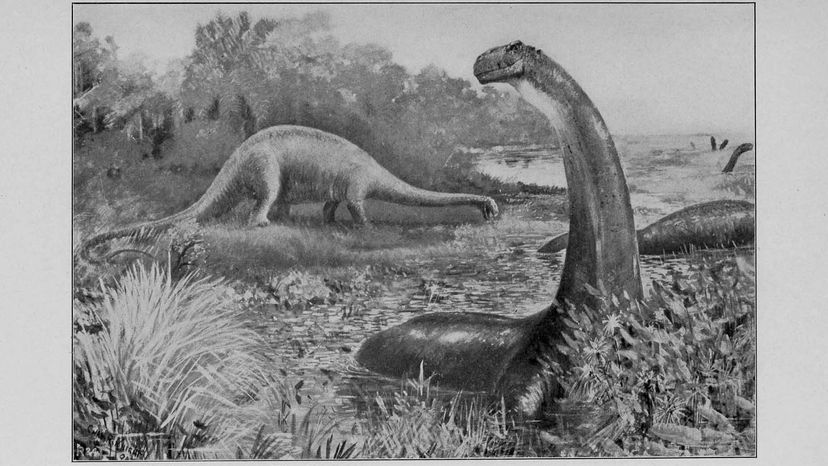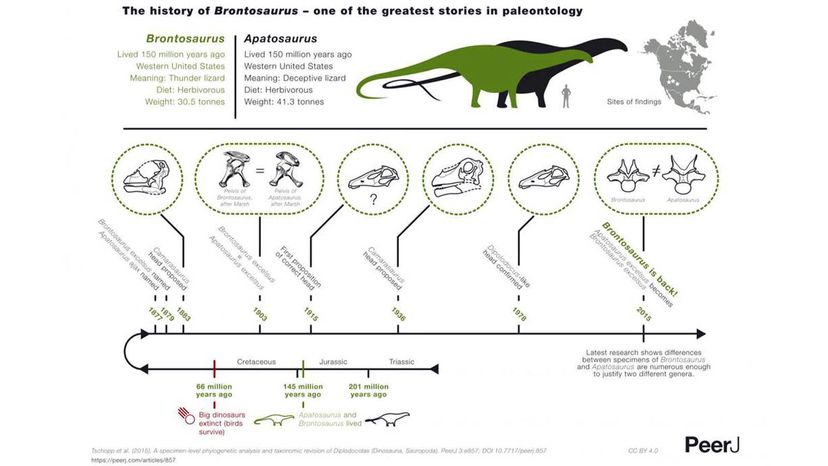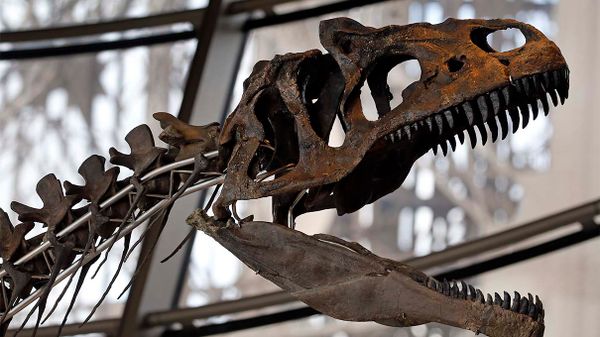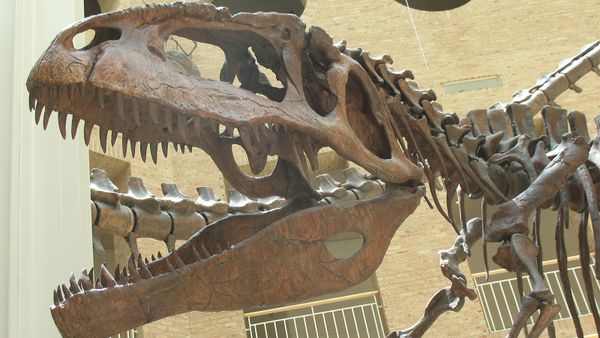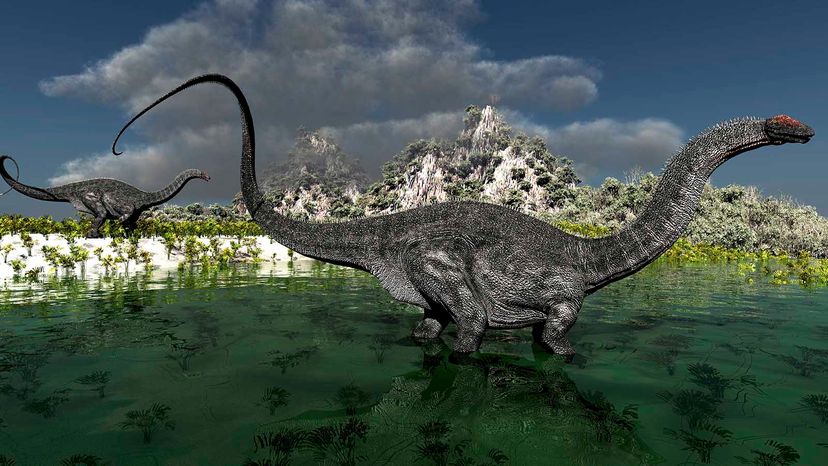
The biggest land animals of all time were sauropod dinosaurs. Long-tailed and (usually) long-necked, these vegetarian giants once lived on every continent, Antarctica included. Some experts think the very largest could've weighed over 60 tons (54 metric tons). Pillar-like legs supported all that tonnage.
The late paleontologist Othniel Charles Marsh was amazed by their enormity. In 1879, he described a newfound sauropod from the American west. Imagining the thunderous crash of its footsteps, he named his beast Brontosaurus excelsus, meaning "noble thunder lizard."
Advertisement
But the name soon ran into trouble. Helped by dedicated fossil hunters, Marsh was constantly identifying — and naming — creatures from our prehistoric past. Brontosaurus wasn't the first sauropod he named. Two years earlier, in 1877, Marsh had dubbed another species Apatosaurus ajax. Nowadays, the relationship between these dinosaurs is a bone of contention. Brontosaurus may not be a valid name, but Apatosaurus sure is.
